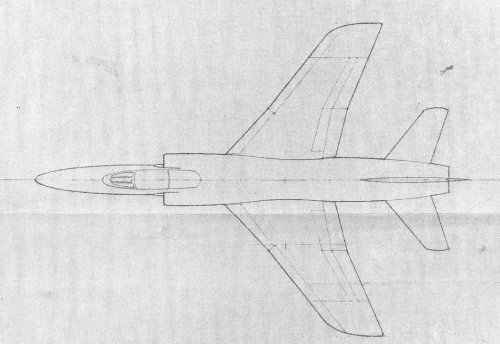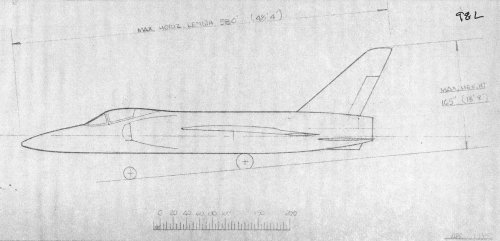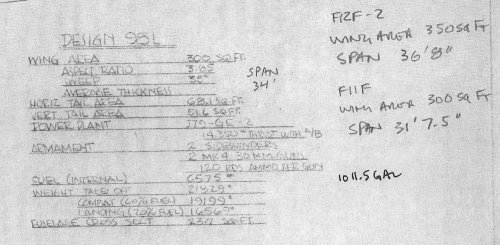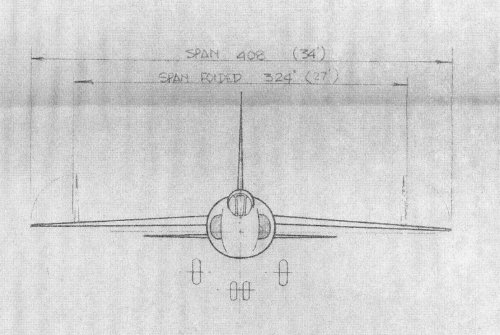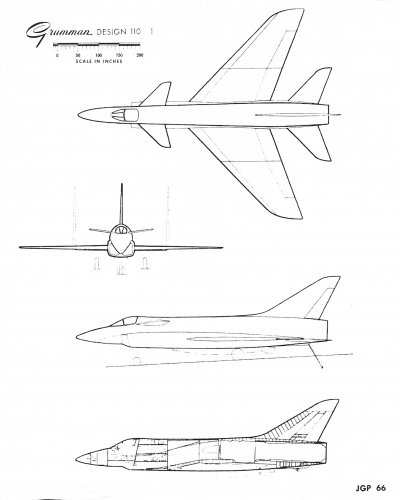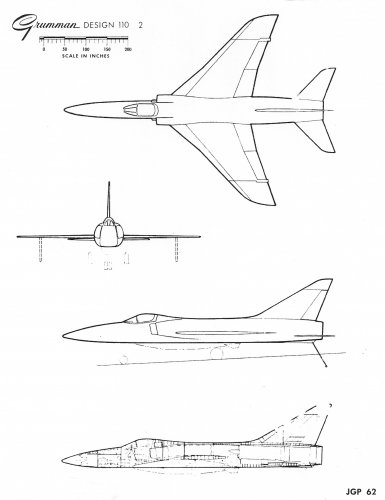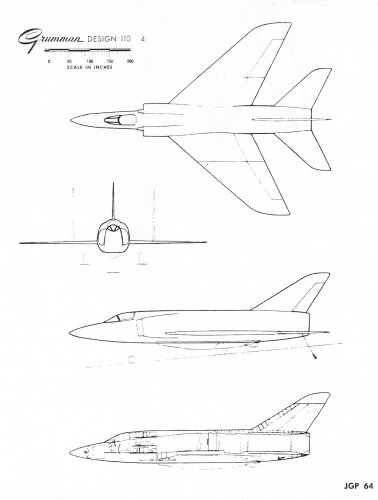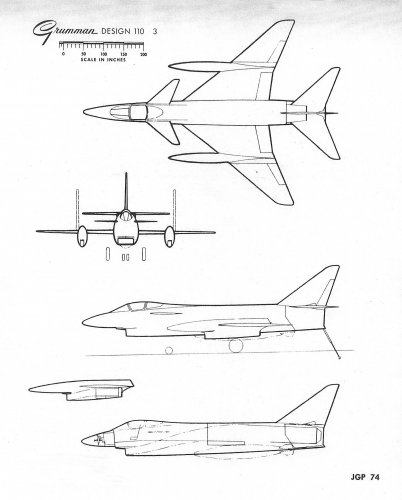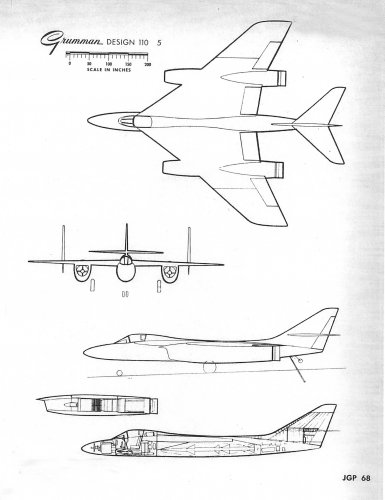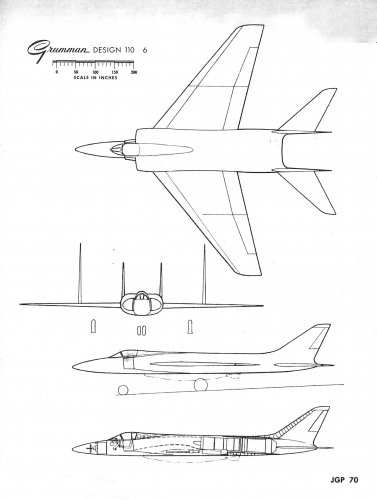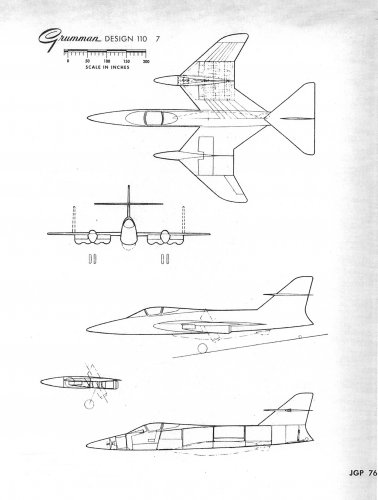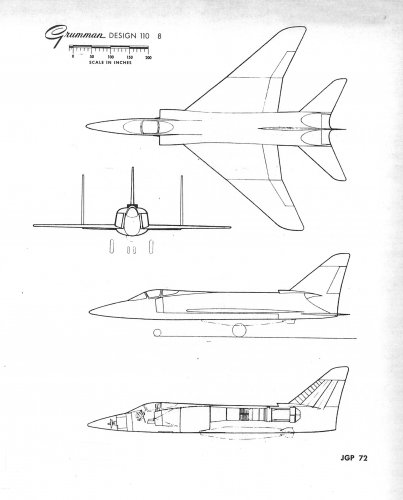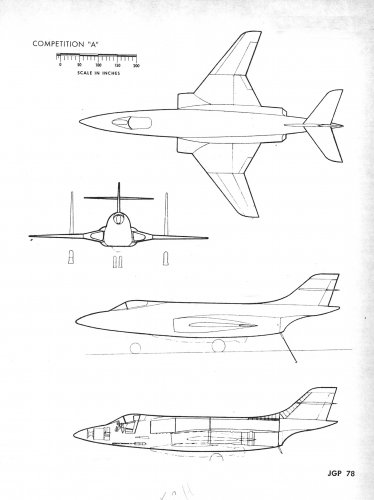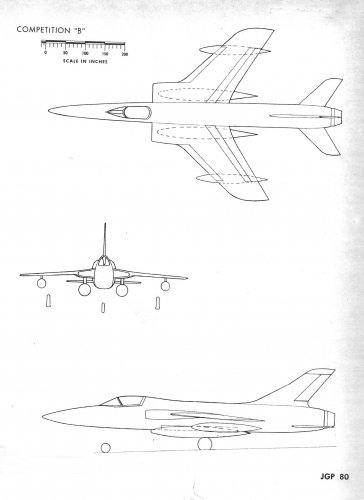In February and March, 1955, Grumman accomplished a design study of options for a carrier-based Navy fighter airplane using the full range of engines expected to be available. The aircraft were all Design 110s, with dash numbers assigned to differentiate the different configurations. The specification and assumptions were Grumman developed: single-seat all-weather; semi-submerged store capability (Mk 7 shape); basic armament of two semi-submerged Sparrows and two 30mm cannon; search and fire control radar with a 24" dish; first flight in late 1958 with production deliveries in 1960; minimum 60,000-foot ceiling at combat weight; broad supersonic speed/altitude envelope with a maximum speed goal of Mach 2.0; cycle time of at least 2.5 hours; combat radius of at least 500 nm; good low-speed, high angle of attack control; maximum surface temperature of 300 degrees F; and 6.5 g structural strength at combat weight.
The schedule limited engine alternatives to those expected to pass the 150-hour production qualification test in 1958 or 1959. These included the J67, J75, J79, and J85.
The 1957 design baseline was the Grumman Design 98L, one of many paper variations on the F9F-9/F11F Tiger. Powered by a single J79, if fell short of the Mach 2.0 goal and did not have the semi-submerged store capability.
The schedule limited engine alternatives to those expected to pass the 150-hour production qualification test in 1958 or 1959. These included the J67, J75, J79, and J85.
The 1957 design baseline was the Grumman Design 98L, one of many paper variations on the F9F-9/F11F Tiger. Powered by a single J79, if fell short of the Mach 2.0 goal and did not have the semi-submerged store capability.

